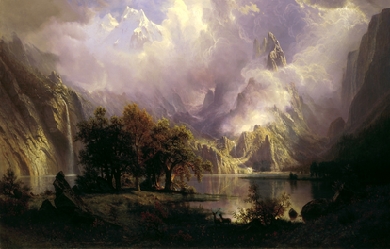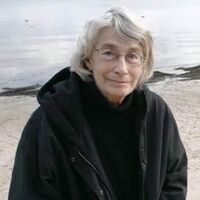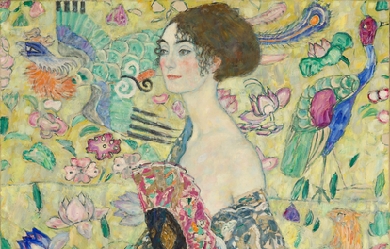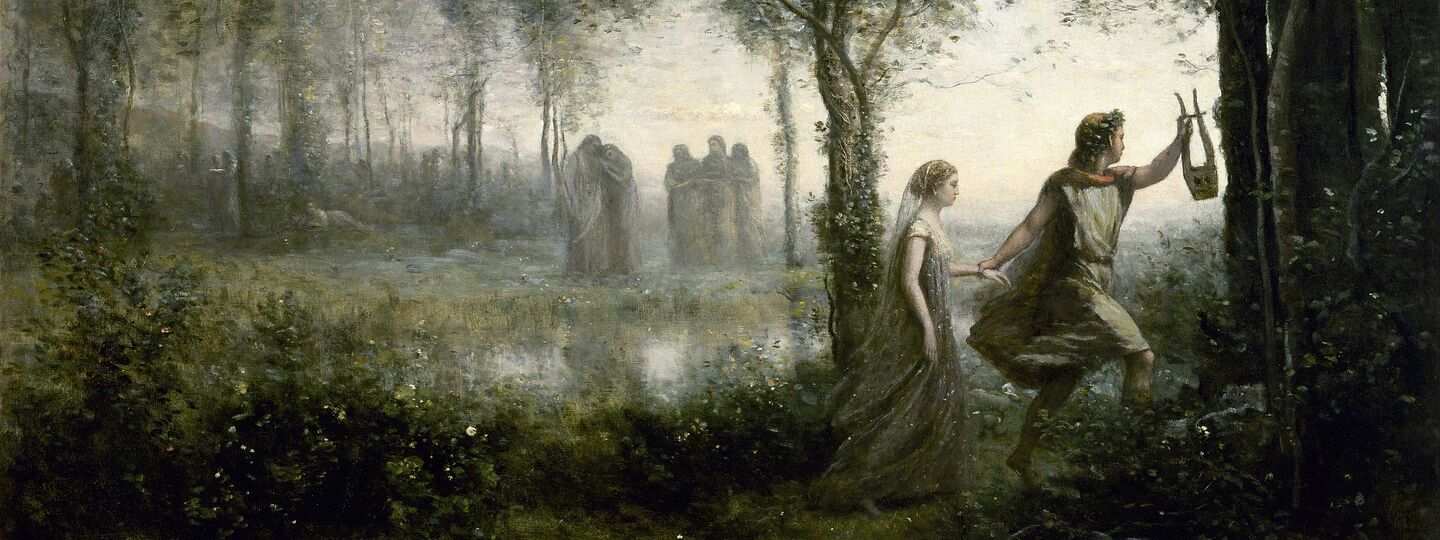
Info
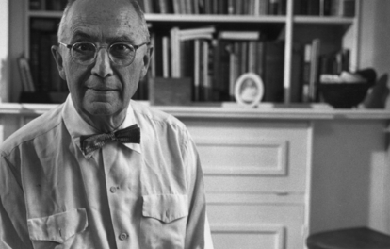
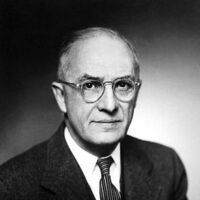
William Carlos Williams (September 17, 1883 – March 4, 1963) was an American poet closely associated with modernism and Imagism. He was also a pediatrician and general practitioner of medicine with a medical degree from the University of Pennsylvania School of Medicine. Williams "worked harder at being a writer than he did at being a physician" but excelled at both. Although his primary occupation was as a family doctor, Williams had a successful literary career as a poet. In addition to poetry (his main literary focus), he occasionally wrote short stories, plays, novels, essays, and translations. He practiced medicine by day and wrote at night. Early in his career, he briefly became involved in the Imagist movement through his friendships with Ezra Pound and H.D. (also known as Hilda Doolittle, another well-known poet whom he befriended while attending the University of Pennsylvania), but soon he began to develop opinions that differed from those of his poet/friends.
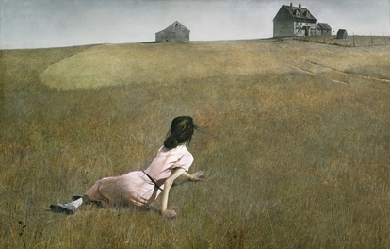
Nació en Buenos Aires el 18 de enero de 1960. Es licenciada en Letras por la Universidad de Buenos Aires, periodista, docente y editora. Ha publicado La Fiesta del Ser, poemas, (Ed. Vinciguerra,1994), premiado en 1995 por la Sociedad Argentina de Escritores. En 1996 una selección de sus poemas apareció en la antología Poesía Argentina de Fin de Siglo. En Patagonia Rumbo Sur (Ed. Vinciguerra, 1998), poemario bilingüe español-inglés ilustrado fotográficamente por Chacho Rodríguez Muñoz, realiza un viaje intemporal a través de la inmensidad patagónica, donde los temas surgen de ese espacio sólo en apariencia vacío, poblado por incontables voces que el viento guarda. En 1999, año del centenario del nacimiento de Jorge Luis Borges, publicó miBorges.com Poema en Nueve Cantos (Ed. Vinciguerra), un homenaje a la monumental huella que el gran poeta dejó en su escritura; obra que apareció conjuntamente en formato libro y en internet, en el sitio www.miborges.com.ar Ejerciendo el periodismo cultural, despliega el género de la entrevista con la gran versatilidad devenida de las dos vertientes que convergen en ella: la literatura y la gráfica. Paralelamente, sus poemas son editados en diversas revistas y publicaciones literarias de la Argentina, América Latina y Portugal. Ese año de 1999 publicó también la investigación periodística Un argentino llamado Mosconi. Un siglo de petróleo en la Argentina y la historia del hombre que lo convirtió en un instrumento para el desarrollo de la Nación , con prólogo de María Esther de Miguel. En 2002 editó Mascarón de proa, poemas (Ed. Edivérn), con prólogo de María Rosa Lojo. En Poemas 2003 publicó una selección de los libros inéditos Materia prima e Intemperies, en Summa poética II (Ed. Vinciguerra, 2004). En 2007 formó parte de la antología Poesía Argentina Contemporánea realizada por la Fundación Argentina para la Poesía, FAP. Al año siguiente, esta misma institución le otorgó el Premio Puma de Plata por su labor periodística en difusión de la poesía. A fines de 2010 editó Aquí no duele -50 poemas– (Ed. Vinciguerra). En 2016 apareció Calle Charcas. Poemas de barbarie para leer escuchando Summertime de George Gershwin, en Summa Poética - Vinciguerra 30° Aniversario, Caja estuche con la participación de 25 poemarios de 25 poetas (Ed. Vinciguerra, 2016). Desde 2013 y hasta fines de 2017 dirigió talleres de “Abordajes Poéticos” para la FAP en la Sociedad Argentina de Escritores y condujo luego la experiencia pionera de un programa en vivo online de taller de lectoescritura visual y radial para esta misma institución señera de la poesía en la Argentina. En agosto de 2017, tres poemas inéditos en libros fueron publicados entre las págs. 84/85, en el N° 137 de la prestigiosa revista de literatura Hispamérica, una de las más importantes publicaciones de referencia del latinoamericanismo académico internacional, realizada, creada y editada desde 1972 por Saúl Sosnowski, Dr. en Letras y catedrático de la Universidad de Maryland, Estados Unidos. En 2020 participó en la antología 24 poetas mujeres hoy II (Ed. Imaginante). En abril de 2021, Imprex Ediciones publicó El gato de Rodas y otros santuarios desolados, poemas. En diciembre de 2021, Ed. Vinciguerra editó Aviso para caminantes (poemas de pandemia y otros) . http://abordajespoeticos.blogspot.com.ar/ https://www.amazon.com/dp/B09RTLWJ5T https://miborgescom.blogspot.com/2019/04/introduccion.html?spref=twhttp://miborgescom.blogspot.com/2019/04/historia-de-una-foto.html
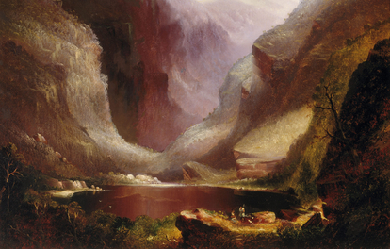
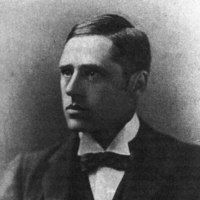
Andrew Barton “Banjo” Paterson, CBE (17 February 1864– 5 February 1941) was an Australian bush poet, journalist and author. He wrote many ballads and poems about Australian life, focusing particularly on the rural and outback areas, including the district around Binalong, New South Wales, where he spent much of his childhood. Paterson’s more notable poems include “Waltzing Matilda”, “The Man from Snowy River” and “Clancy of the Overflow”.

I've been writing all my life, since I could read and hold a pen. Its only been in the last couple of years that friends and writing colleagues have encouraged me to submit work for publication. Slowly I've been finding success in getting work recognised in magazines and journals and at spoken word events. I'll post here as regularly as I can, posting poems that are new that I like or have achieved some success. I hope the writing engenders some understanding and encouragement #poetatheart
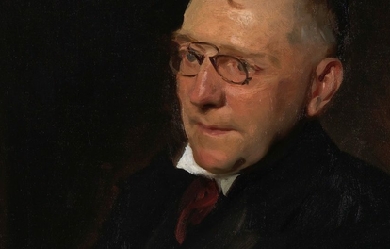
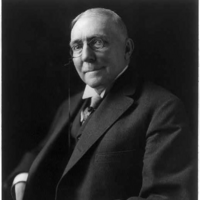
James Whitcomb Riley (October 7, 1849 – July 22, 1916) was an American writer, poet, and best-selling author. During his lifetime he was known as the "Hoosier Poet" and "Children's Poet" for his dialect works and his children's poetry respectively. His poems tended to be humorous or sentimental, and of the approximately one thousand poems that Riley authored, the majority are in dialect. His famous works include "Little Orphant Annie" and "The Raggedy Man". Riley began his career writing verses as a sign maker and submitting poetry to newspapers. Thanks in part to an endorsement from poet Henry Wadsworth Longfellow, he eventually earned successive jobs at Indiana newspaper publishers during the latter 1870s. Riley gradually rose in prominence during the 1880s through his poetry reading tours. He traveled a touring circuit first in the Midwest, and then nationally, holding shows and making joint appearances on stage with other famous talents. Regularly struggling with his alcohol addiction, Riley never married or had children, and created a scandal in 1888 when he became too drunk to perform. He became more popular in spite of the bad press he received, and as a result extricated himself from poorly negotiated contracts that limited his earnings; he quickly became very wealthy. Riley became a bestselling author in the 1890s. His children's poems were compiled into a book and illustrated by Howard Chandler Christy. Titled the Rhymes of Childhood, the book was his most popular and sold millions of copies. As a poet, Riley achieved an uncommon level of fame during his own lifetime. He was honored with annual Riley Day celebrations around the United States and was regularly called on to perform readings at national civic events. He continued to write and hold occasional poetry readings until a stroke paralyzed his right arm in 1910. Riley's chief legacy was his influence in fostering the creation of a midwestern cultural identity and his contributions to the Golden Age of Indiana Literature. Along with other writers of his era, he helped create a caricature of midwesterners and formed a literary community that produced works rivaling the established eastern literati. There are many memorials dedicated to Riley, including the James Whitcomb Riley Hospital for Children. Family and background James Whitcomb Riley was born on October 7, 1849, in the town of Greenfield, Indiana, the third of the six children of Reuben Andrew and Elizabeth Marine Riley.[n 1] Riley's father was an attorney, and in the year before Riley's birth, he was elected a member of the Indiana House of Representatives as a Democrat. He developed a friendship with James Whitcomb, the governor of Indiana, after whom he named his son. Martin Riley, Riley's uncle, was an amateur poet who occasionally wrote verses for local newspapers. Riley was fond of his uncle who helped influence his early interest in poetry. Shortly after Riley's birth, the family moved into a larger house in town. Riley was "a quiet boy, not talkative, who would often go about with one eye shut as he observed and speculated." His mother taught him to read and write at home before sending him to the local community school in 1852. He found school difficult and was frequently in trouble. Often punished, he had nothing kind to say of his teachers in his writings. His poem "The Educator" told of an intelligent but sinister teacher and may have been based on one of his instructors. Riley was most fond of his last teacher, Lee O. Harris. Harris noticed Riley's interest in poetry and reading and encouraged him to pursue it further. Riley's school attendance was sporadic, and he graduated from grade eight at age twenty in 1869. In an 1892 newspaper article, Riley confessed that he knew little of mathematics, geography, or science, and his understanding of proper grammar was poor. Later critics, like Henry Beers, pointed to his poor education as the reason for his success in writing; his prose was written in the language of common people which spurred his popularity. Childhood influences Riley lived in his parents' home until he was twenty-one years old. At five years old he began spending time at the Brandywine Creek just outside Greenfield. His poems "The Barefoot Boy" and "The Old Swimmin' Hole" referred back to his time at the creek. He was introduced in his childhood to many people who later influenced his poetry. His father regularly brought home a variety of clients and disadvantaged people to give them assistance. Riley's poem "The Raggedy Man" was based on a German tramp his father hired to work at the family home. Riley picked up the cadence and character of the dialect of central Indiana from travelers along the old National Road. Their speech greatly influenced the hundreds of poems he wrote in nineteenth century Hoosier dialect. Riley's mother frequently told him stories of fairies, trolls, and giants, and read him children's poems. She was very superstitious, and influenced Riley with many of her beliefs. They both placed "spirit rappings" in their homes on places like tables and bureaus to capture any spirits that may have been wandering about. This influence is recognized in many of his works, including "Flying Islands of the Night." As was common at that time, Riley and his friends had few toys and they amused themselves with activities. With his mother's aid, Riley began creating plays and theatricals which he and his friends would practice and perform in the back of a local grocery store. As he grew older, the boys named their troupe the Adelphians and began to have their shows in barns where they could fit larger audiences. Riley wrote of these early performances in his poem "When We First Played 'Show'," where he referred to himself as "Jamesy." Many of Riley's poems are filled with musical references. Riley had no musical education, and could not read sheet music, but learned from his father how to play guitar, and from a friend how to play violin. He performed in two different local bands, and became so proficient on the violin he was invited to play with a group of adult Freemasons at several events. A few of his later poems were set to music and song, one of the most well known being A Short'nin' Bread Song—Pieced Out. When Riley was ten years old, the first library opened in his hometown. From an early age he developed a love of literature. He and his friends spent time at the library where the librarian read stories and poems to them. Charles Dickens became one Riley's favorites, and helped inspire the poems "St. Lirriper," "Christmas Season," and "God Bless Us Every One." Riley's father enlisted in the Union Army during the American Civil War, leaving his wife to manage the family home. While he was away, the family took in a twelve-year-old orphan named Mary Alice "Allie" Smith. Smith was the inspiration for Riley's poem "Little Orphant Annie". Riley intended to name the poem "Little Orphant Allie", but a typesetter's error changed the name of the poem during printing. Finding poetry Riley's father returned from the war partially paralyzed. He was unable to continue working in his legal practice and the family soon fell into financial distress. The war had a negative physiological effect on him, and his relationship with his family quickly deteriorated. He opposed Riley's interest in poetry and encouraged him to find a different career. The family finances finally disintegrated and they were forced to sell their town home in April 1870 and return to their country farm. Riley's mother was able to keep peace in the family, but after her death in August from heart disease, Riley and his father had a final break. He blamed his mother's death on his father's failure to care for her in her final weeks. He continued to regret the loss of his childhood home and wrote frequently of how it was so cruelly snatched from him by the war, subsequent poverty, and his mother's death. After the events of 1870, he developed an addiction to alcohol which he struggled with for the remainder of his life. Becoming increasingly belligerent toward his father, Riley moved out of the family home and briefly had a job painting houses before leaving Greenfield in November 1870. He was recruited as a Bible salesman and began working in the nearby town of Rushville, Indiana. The job provided little income and he returned to Greenfield in March 1871 where he started an apprenticeship to a painter. He completed the study and opened a business in Greenfield creating and maintaining signs. His earliest known poems are verses he wrote as clever advertisements for his customers. Riley began participating in local theater productions with the Adelphians to earn extra income, and during the winter months, when the demand for painting declined, Riley began writing poetry which he mailed to his brother living in Indianapolis. His brother acted as his agent and offered the poems to the newspaper Indianapolis Mirror for free. His first poem was featured on March 30, 1872 under the pseudonym "Jay Whit." Riley wrote more than twenty poems to the newspaper, including one that was featured on the front page. In July 1872, after becoming convinced sales would provide more income than sign painting, he joined the McCrillus Company based in Anderson, Indiana. The company sold patent medicines that they marketed in small traveling shows around Indiana. Riley joined the act as a huckster, calling himself the "Painter Poet". He traveled with the act, composing poetry and performing at the shows. After his act he sold tonics to his audience, sometimes employing dishonesty. During one stop, Riley presented himself as a formerly blind painter who had been cured by a tonic, using himself as evidence to encourage the audience to purchase his product. Riley began sending poems to his brother again in February 1873. About the same time he and several friends began an advertisement company. The men traveled around Indiana creating large billboard-like signs on the sides of buildings and barns and in high places that would be visible from a distance. The company was financially successful, but Riley was continually drawn to poetry. In October he traveled to South Bend where he took a job at Stockford & Blowney painting verses on signs for a month; the short duration of his job may have been due to his frequent drunkenness at that time. In early 1874, Riley returned to Greenfield to become a writer full-time. In February he submitted a poem entitled "At Last" to the Danbury News, a Connecticut newspaper. The editors accepted his poem, paid him for it, and wrote him a letter encouraging him to submit more. Riley found the note and his first payment inspiring. He began submitting poems regularly to the editors, but after the newspaper shut down in 1875, Riley was left without a paying publisher. He began traveling and performing with the Adelphians around central Indiana to earn an income while he searched for a new publisher. In August 1875 he joined another traveling tonic show run by the Wizard Oil Company. Newspaper work Riley began sending correspondence to the famous American poet Henry Wadsworth Longfellow during late 1875 seeking his endorsement to help him start a career as a poet. He submitted many poems to Longfellow, whom he considered to be the greatest living poet. Not receiving a prompt response, he sent similar letters to John Townsend Trowbridge, and several other prominent writers askng for an endorsement. Longfellow finally replied in a brief letter, telling Riley that "I have read [the poems] in great pleasure, and think they show a true poetic faculty and insight." Riley carried the letter with him everywhere and, hoping to receive a job offer and to create a market for his poetry, he began sending poems to dozens of newspapers touting Longfellow's endorsement. Among the newspapers to take an interest in the poems was the Indianapolis Journal, a major Republican Party metropolitan newspaper in Indiana. Among the first poems the newspaper purchased from Riley were "Song of the New Year", "An Empty Nest", and a short story entitled "A Remarkable Man". The editors of the Anderson Democrat discovered Riley's poems in the Indianapolis Journal and offered him a job as a reporter in February 1877. Riley accepted. He worked as a normal reporter gathering local news, writing articles, and assisting in setting the typecast on the printing press. He continued to write poems regularly for the newspaper and to sell other poems to larger newspapers. During the year Riley spent working in Anderson, he met and began to court Edora Mysers. The couple became engaged, but terminated the relationship after they decided against marriage in August. After a rejection of his poems by an eastern periodical, Riley began to formulate a plot to prove his work was of good quality and that it was being rejected only because his name was unknown in the east. Riley authored a poem imitating the style of Edgar Allan Poe and submitted it to the Kokomo Dispatch under a fictitious name claiming it was a long lost Poe poem. The Dispatch published the poem and reported it as such. Riley and two other men who were part of the plot waited two weeks for the poem to be published by major newspapers in Chicago, Boston, and New York to gauge their reaction; they were disappointed. While a few newspapers believed the poem to be authentic, the majority did not, claiming the quality was too poor to be authored by Poe. An employee of the Dispatch learned the truth of the incident and reported it to the Kokomo Tribune, which published an expose that outed Riley as a conspirator behind the hoax. The revelation damaged the credibility of the Dispatch and harmed Riley's reputation. In the aftermath of the Poe plot, Riley was dismissed from the Democrat, so he returned to Greenfield to spend time writing poetry. Back home, he met Clara Louise Bottsford, a school teacher boarding in his father's home. They found they had much in common, particularly their love of literature. The couple began a twelve-year intermittent relationship which would be Riley's longest lasting. In mid-1878 the couple had their first breakup, caused partly by Riley's alcohol addiction. The event led Riley to make his first attempt to give up liquor. He joined a local temperance organization, but quit after a few weeks. Performing poet Without a steady income, his financial situation began to deteriorate. He began submitting his poems to more prominent literary magazines, including Scribner's Monthly, but was informed that although he showed promise, his work was still short of the standards required for use in their publications. Locally, he was still dealing with the stigma of the Poe plot. The Indianapolis Journal and other newspapers refused to accept his poetry, leaving Riley desperate for income. In January 1878 on the advice of a friend, Riley paid an entrance fee to join a traveling lecture circuit where he could give poetry readings. In exchange, he received a portion of the profit his performances earned. Such circuits were popular at the time, and Riley quickly earned a local reputation for his entertaining readings. In August 1878, Riley followed Indiana Governor James D. Williams as speaker at a civic event in a small town near Indianapolis. He recited a recently composed poem, "A Childhood Home of Long Ago," telling of life in pioneer Indiana. The poem was well received and was given good reviews by several newspapers. "Flying Islands of the Night" is the only play that Riley wrote and published. Authored while Riley was traveling with the Adelphians, but never performed, the play has similarities to A Midsummer Night's Dream, which Riley may have used as a model. Flying Islands concerns a kingdom besieged by evil forces of a sinister queen who is defeated eventually by an angel-like heroine. Most reviews were positive. Riley published the play and it became popular in the central Indiana area during late 1878, helping Riley to convince newspapers to again accept his poetry. In November 1879 he was offered a position as a columnist at the Indianapolis Journal and accepted after being encouraged by E.B. Matindale, the paper's chief editor. Although the play and his newspaper work helped expose him to a wider audience, the chief source of his increasing popularity was his performances on the lecture circuit. He made both dramatic and comedic readings of his poetry, and by early 1879 could guarantee large crowds whenever he performed. In an 1894 article, Hamlin Garland wrote that Riley's celebrity resulted from his reading talent, saying "his vibrant individual voice, his flexible lips, his droll glance, united to make him at once poet and comedian—comedian in the sense in which makes for tears as well as for laughter." Although he was a good performer, his acts were not entirely original in style; he frequently copied practices developed by Samuel Clemens and Will Carleton. His tour in 1880 took him to every city in Indiana where he was introduced by local dignitaries and other popular figures, including Maurice Thompson with whom he began to develop a close friendship. Developing and maintaining his publicity became a constant job, and received more of his attention as his fame grew. Keeping his alcohol addiction secret, maintaining the persona of a simple rural poet and a friendly common person became most important. Riley identified these traits as the basis of his popularity during the mid-1880s, and wrote of his need to maintain a fictional persona. He encouraged the stereotype by authoring poetry he thought would help build his identity. He was aided by editorials he authored and submitted to the Indianapolis Journal offering observations on events from his perspective as a "humble rural poet". He changed his appearance to look more mainstream, and began by shaving his mustache off and abandoning the flamboyant dress he employed in his early circuit tours. By 1880 his poems were beginning to be published nationally and were receiving positive reviews. "Tom Johnson's Quit" was carried by newspapers in twenty states, thanks in part to the careful cultivation of his popularity. Riley became frustrated that despite his growing acclaim, he found it difficult to achieve financial success. In the early 1880s, in addition to his steady performing, Riley began producing many poems to increase his income. Half of his poems were written during the period. The constant labor had adverse effects on his health, which was worsened by his drinking. At the urging of Maurice Thompson, he again attempted to stop drinking liquor, but was only able to give it up for a few months. Politics In March 1888, Riley traveled to Washington, D.C. where he had dinner at the White House with other members of the International Copyright League and President of the United States Grover Cleveland. Riley made a brief performance for the dignitaries at the event before speaking about the need for international copyright protections. Cleveland was enamored by Riley's performance and invited him back for a private meeting during which the two men discussed cultural topics. In the 1888 Presidential Election campaign, Riley's acquaintance Benjamin Harrison was nominated as the Republican candidate. Although Riley had shunned politics for most of his life, he gave Harrison a personal endorsement and participated in fund-raising events and vote stumping. The election was exceptionally partisan in Indiana, and Riley found the atmosphere of the campaign stressful; he vowed never to become involved with politics again. Upon Harrison's election, he suggested Riley be named the national poet laureate, but Congress failed to act on the request. Riley was still honored by Harrison and visited him at the White House on several occasions to perform at civic events. Pay problems and scandal Riley and Nye made arrangements with James Pond to make two national tours during 1888 and 1889. The tours were popular and generally sold out, with hundreds having to be turned away. The shows were usually forty-five minutes to an hour long and featured Riley reading often humorous poetry interspersed by stories and jokes from Nye. The shows were informal and the two men adjusted their performances based on their audiences reactions. Riley memorized forty of his poems for the shows to add to his own versatility. Many prominent literary and theatrical people attended the shows. At a New York City show in March 1888, Augustin Daly was so enthralled by the show he insisted on hosting the two men at a banquet with several leading Broadway theatre actors. Despite Riley serving as the act's main draw, he was not permitted to become an equal partner in the venture. Nye and Pond both received a percentage of the net profit, while Riley was paid a flat rate for each performance. In addition, because of Riley's past agreements with the Redpath Lyceum Bureau, he was required to pay half of his fee to his agent Amos Walker. This caused the other men to profit more than Riley from his own work. To remedy this situation, Riley hired his brother-in-law Henry Eitel, an Indianapolis banker, to manage his finances and act on his behalf to try and extricate him from his contract. Despite discussions and assurances from Pond that he would work to address the problem, Eitel had no success. Pond ultimately made the situation worse by booking months of solid performances, not allowing Riley and Nye a day of rest. These events affected Riley physically and emotionally; he became despondent and began his worst period of alcoholism. During November 1889, the tour was forced to cancel several shows after Riley became severely inebriated at a stop in Madison, Wisconsin. Walker began monitoring Riley and denying him access to liquor, but Riley found ways to evade Walker. At a stop at the Masonic Temple Theatre in Louisville, Kentucky, in January 1890, Riley paid the hotel's bartender to sneak whiskey to his room. He became too drunk to perform, and was unable to travel to the next stop. Nye terminated the partnership and tour in response. The reason for the breakup could not be kept secret, and hotel staff reported to the Louisville Courier-Journal that they saw Riley in a drunken stupor walking around the hotel. The story made national news and Riley feared his career was ruined. He secretly left Louisville at night and returned to Indianapolis by train. Eitel defended Riley to the press in an effort to gain sympathy for Riley, explaining the abusive financial arrangements his partners had made. Riley however refused to speak to reporters and hid himself for weeks. Much to Riley's surprise, the news reports made him more popular than ever. Many people thought the stories were exaggerated, and Riley's carefully cultivated image made it difficult for the public to believe he was an alcoholic. Riley had stopped sending poetry to newspapers and magazines in the aftermath, but they soon began corresponding with him requesting that he resume writing. This encouraged Riley, and he made another attempt to give up liquor as he returned to his public career. The negative press did not end however, as Nye and Pond threatened to sue Riley for causing their tour to end prematurely. They claimed to have lost $20,000. Walker threatened a separate suit demanding $1,000. Riley hired Indianapolis lawyer William P. Fishback to represent him and the men settled out of court. The full details of the settlement were never disclosed, but whatever the case, Riley finally extricated himself from his old contracts and became a free agent. The exorbitant amount Riley was being sued for only reinforced public opinion that Riley had been mistreated by his partners, and helped him maintain his image. Nye and Riley remained good friends, and Riley later wrote that Pond and Walker were the source of the problems. Riley's poetry had become popular in Britain, in large part due to his book Old-Fashioned Roses. In May 1891 he traveled to England to make a tour and what he considered a literary pilgrimage. He landed in Liverpool and traveled first to Dumfries, Scotland, the home and burial place of Robert Burns. Riley had long been compared to Burns by critics because they both used dialect in their poetry and drew inspiration from their rural homes. He then traveled to Edinburgh, York, and London, reciting poetry for gatherings at each stop. Augustin Daly arranged for him to give a poetry reading to prominent British actors in London. Riley was warmly welcomed by its literary and theatrical community and he toured places that Shakespeare had frequented. Riley quickly tired of traveling abroad and began longing for home, writing to his nephew that he regretted having left the United States. He curtailed his journey and returned to New York City in August. He spent the next months in his Greenfield home attempting to write an epic poem, but after several attempts gave up, believing he did not possess the ability. By 1890, Riley had authored almost all of his famous poems. The few poems he did write during the 1890s were generally less well received by the public. As a solution, Riley and his publishers began reusing poetry from other books and printing some of his earliest works. When Neighborly Poems was published in 1891, a critic working for the Chicago Tribune pointed out the use of Riley's earliest works, commenting that Riley was using his popularity to push his crude earlier works onto the public only to make money. Riley's newest poems published in the 1894 book Armazindy received very negative reviews that referred to poems like "The Little Dog-Woggy" and "Jargon-Jingle" as "drivel" and to Riley as a "worn out genius." Most of his growing number of critics suggested that he ignored the quality of the poems for the sake of making money. National poet Riley had become very wealthy by the time he ended touring in 1895, and was earning $1,000 a week. Although he retired, he continued to make minor appearances. In 1896, Riley performed four shows in Denver. Most of the performances of his later life were at civic celebrations. He was a regular speaker at Decoration Day events and delivered poetry before the unveiling of monuments in Washington, D.C. Newspapers began referring to him as the "National Poet", "the poet laureate of America", and "the people's poet laureate". Riley wrote many of his patriotic poems for such events, including "The Soldier", "The Name of Old Glory", and his most famous such poem, "America!". The 1902 poem "America, Messiah of Nations" was written and read by Riley for the dedication of the Indianapolis Soldiers' and Sailors' Monument. The only new poetry Riley published after the end of the century were elegies for famous friends. The poetic qualities of the poems were often poor, but they contained many popular sentiments concerning the deceased. Among those he eulogized were Benjamin Harrison, Lew Wallace, and Henry Lawton. Because of the poor quality of the poems, his friends and publishers requested that he stop writing them, but he refused. In 1897, Riley's publishers suggested that he create a multi-volume series of books containing his complete life works. With the help of his nephew, Riley began working to compile the books, which eventually totaled sixteen volumes and were finally completed in 1914. Such works were uncommon during the lives of writers, attesting to the uncommon popularity Riley had achieved. His works had become staples for Ivy League literature courses and universities began offering him honorary degrees. The first was Yale in 1902, followed by a Doctorate of Letters from the University of Pennsylvania in 1904. Wabash College and Indiana University granted him similar awards. In 1908 he was elected member of the National Institute of Arts and Letters, and in 1912 they conferred upon him a special medal for poetry. Riley was influential in helping other poets start their careers, having particularly strong influences on Hamlin Garland, William Allen White, and Edgar Lee Masters. He discovered aspiring African American poet Paul Laurence Dunbar in 1892. Riley thought Dunbar's work was "worthy of applause", and wrote him letters of recommendation to help him get his work published. Declining health In 1901, Riley's doctor diagnosed him with neurasthenia, a nervous disorder, and recommended long periods of rest as a cure.[173] Riley remained ill for the rest of his life and relied on his landlords and family to aid in his care. During the winter months he moved to Miami, Florida, and during summer spent time with his family in Greenfield. He made only a few trips during the decade, including one to Mexico in 1906. He became very depressed by his condition, writing to his friends that he thought he could die at any moment, and often used alcohol for relief.[174] In March 1909, Riley was stricken a second time with Bell's palsy, and partial deafness, the symptoms only gradually eased over the course of the year.[175] Riley was a difficult patient, and generally refused to take any medicine except the patent medicines he had sold in his earlier years; the medicines often worsened his conditions, but his doctors could not sway his opinion.[176] On July 10, 1910 he suffered a stroke that paralyzed the right side of his body. Hoping for a quick recovery, his family kept the news from the press until September. Riley found the loss of use of his writing hand the worst part of the stroke, which served only to further depress him.[174][177] With his health so poor, he decided to work on a legacy by which to be remembered in Indianapolis. In 1911 he donated land and funds to build a new library on Pennsylvania Avenue.[178] By 1913, with the aid of a cane, Riley began to recover his ability to walk. His inability to write, however, nearly ended his production of poems. George Ade worked with him from 1910 through 1916 to write his last five poems and several short autobiographical sketches as Riley dictated. His publisher continued recycling old works into new books, which remained in high demand.[178] Since the mid-1880s, Riley had been the nation's most read poet, a trend that accelerated at the turn of the century. In 1912 Riley recorded readings of his most popular poetry to be sold by Victor Records. Riley was the subject of three paintings by T. C. Steele. The Indianapolis Arts Association commissioned a portrait of Riley to be created by world famous painter John Singer Sargent. Riley's image became a nationally known icon and many businesses capitalized on his popularity to sell their products; Hoosier Poet brand vegetables became a major trade-name in the midwest.[179] In 1912, the governor of Indiana instituted Riley Day on the poet's birthday. Schools were required to teach Riley's poems to their children, and banquet events were held in his honor around the state. In 1915 and 1916 the celebration was national after being proclaimed in most states. The annual celebration continued in Indiana until 1968.[180] In early 1916 Riley was filmed as part of a movie to celebrate Indiana's centennial, the video is on display at the Indiana State Library.[181][182] Death and legacy On July 22, 1916, Riley suffered a second stroke. He recovered enough during the day to speak and joke with his companions. He died before dawn the next morning, July 23.[183] Riley's death shocked the nation and made front page headlines in major newspapers.[184] President Woodrow Wilson wrote a brief note to Riley's family offering condolences on behalf the entire nation. Indiana Governor Samuel M. Ralston offered to allow Riley to lie in state at the Indiana Statehouse—Abraham Lincoln being the only other person to have previously received such an honor.[185] During the ten hours he lay in state on July 24, more than thirty-five thousand people filed past his bronze casket; the line was still miles long at the end of the day and thousands were turned away. The next day a private funeral ceremony was held and attended by many dignitaries. A large funeral procession then carried him to Crown Hill Cemetery where he was buried in a tomb at the top of the hill, the highest point in the city of Indianapolis.[186] Within a year of Riley's death many memorials were created, including several by the James Whitcomb Riley Memorial Association. The James Whitcomb Riley Hospital for Children was created and named in his honor by a group of wealthy benefactors and opened in 1924. In the following years, other memorials intended to benefit children were created, including Camp Riley for youth with disabilities.[187][188] The memorial foundation purchased the poet's Lockerbie home in Indianapolis and it is now maintained as a museum. The James Whitcomb Riley Museum Home is the only late-Victorian home in Indiana that is open to the public and the United States' only late-Victorian preservation, featuring authentic furniture and decor from that era. His birthplace and boyhood home, now the James Whitcomb Riley House, is preserved as a historical site.[189] A Liberty ship, commissioned April 23, 1942, was christened the SS James Whitcomb Riley. It served with the United States Maritime Commission until being scrapped in 1971. James Whitcomb Riley High School opened in South Bend, Indiana in 1924. In 1950, there was a James Whitcomb Riley Elementary School in Hammond, Indiana, but it was torn down in 2006. East Chicago, Indiana had a Riley School at one time, as did neighboring Gary, Indiana and Anderson, Indiana. One of New Castle, Indiana's elementary schools is named for Riley as is the road on which it is located. The former Greenfield High School was converted to Riley Elementary School and listed on the National Register of Historic Places in 1986. In 1940, the U.S. Postal Service issued a 10-cent stamp honoring Riley.[190] As a lasting tribute, the citizens of Greenfield hold a festival every year in Riley's honor. Taking place the first or second weekend of October, the "Riley Days" festival traditionally commences with a flower parade in which local school children place flowers around Myra Reynolds Richards' statue of Riley on the county courthouse lawn, while a band plays lively music in honor of the poet. Weeks before the festival, the festival board has a queen contest. The 2010–2011 queen was Corinne Butler. The pageant has been going on many years in honor of the Hoosier poet[191] According to historian Elizabeth Van Allen, Riley was instrumental in helping form a midwestern cultural identity. The midwestern United States had no significant literary community before the 1880s.[192] The works of the Western Association of Writers, most notably those of Riley and Wallace, helped create the midwest's cultural identity and create a rival literary community to the established eastern literari. For this reason, and the publicity Riley's work created, he was commonly known as the "Hoosier Poet." Critical reception and style Riley was among the most popular writers of the late nineteenth and early twentieth century, known for his "uncomplicated, sentimental, and humorous" writing.[195] Often writing his verses in dialect, his poetry caused readers to recall a nostalgic and simpler time in earlier American history. This gave his poetry a unique appeal during a period of rapid industrialization and urbanization in the United States. Riley was a prolific writer who "achieved mass appeal partly due to his canny sense of marketing and publicity."[195] He published more than fifty books, mostly of poetry and humorous short stories, and sold millions of copies.[195] Riley is often remembered for his most famous poems, including the "The Raggedy Man" and "Little Orphant Annie". Many of his poems, including those, where partially autobiographical, as he used events and people from his childhood as an inspiration for subject matter.[195] His poems often contained morals and warnings for children, containing messages telling children to care for the less fortunate of society. David Galens and Van Allen both see these messages as Riley's subtle response to the turbulent economic times of the Gilded Age and the growing progressive movement.[196] Riley believed that urbanization robbed children of their innocence and sincerity, and in his poems he attempted to introduce and idolize characters who had not lost those qualities.[197] His children's poems are "exuberant, performative, and often display Riley's penchant for using humorous characterization, repetition, and dialect to make his poetry accessible to a wide-ranging audience."[195][198] Although hinted at indirectly in some poems, Riley wrote very little on serious subject matter, and actually mocked attempts at serious poetry. Only a few of his sentimental poems concerned serious subjects. "Little Mandy's Christmas-Tree", "The Absence of Little Wesley", and "The Happy Little Cripple" were about poverty, the death of a child, and disabilities. Like his children's poems, they too contained morals, suggesting society should pity the downtrodden and be charitable.[195][198] Riley wrote gentle and romantic poems that were not in dialect. They generally consisted of sonnets and were strongly influenced by the works of John Greenleaf Whittier, Henry Wadsworth Longfellow, and Alfred, Lord Tennyson. His standard English poetry was never as popular as his Hoosier dialect poems.[195] Still less popular were the poems Riley authored in his later years; most were to commemorate important events of American history and to eulogize the dead.[195] Riley's contemporaries acclaimed him "America's best-loved poet".[195][198] In 1920, Henry Beers lauded the works of Riley "as natural and unaffected, with none of the discontent and deep thought of cultured song."[195] Samuel Clemens, William Dean Howells, and Hamlin Garland, each praised Riley's work and the idealism he expressed in his poetry. Only a few critics of the period found fault with Riley's works. Ambrose Bierce criticized Riley for his frequent use of dialect. Bierce accused Riley of using dialect to "cover up [the] faulty construction" of his poems.[195] Edgar Lee Masters found Riley's work to be superficial, claiming it lacked irony and that he had only a "narrow emotional range".[195] By the 1930s popular critical opinion towards Riley's works began to shift in favor of the negative reviews. In 1951, James T. Farrell said Riley's works were "cliched." Galens wrote that modern critics consider Riley to be a "minor poet, whose work—provincial, sentimental, and superficial though it may have been—nevertheless struck a chord with a mass audience in a time of enormous cultural change."[195] Thomas C. Johnson wrote that what most interests modern critics was Riley's ability to market his work, saying he had a unique understanding of "how to commodify his own image and the nostalgic dreams of an anxious nation."[195] Among the earliest widespread criticisms of Riley were opinions that his dialect writing did not actually represent the true dialect of central Indiana. In 1970 Peter Revell wrote that Riley's dialect was more similar to the poor speech of a child rather than the dialect of his region. Revell made extensive comparison to historical texts and Riley's dialect usage. Philip Greasley wrote that that while "some critics have dismissed him as sub-literary, insincere, and an artificial entertainer, his defenders reply that an author so popular with millions of people in different walks of life must contribute something of value, and that his faults, if any, can be ignored." References Wikipedia—https://en.wikipedia.org/wiki/James_Whitcomb_Riley
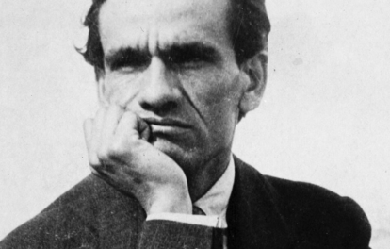
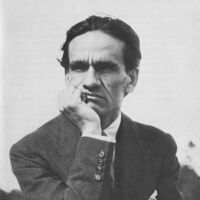
CÉSAR VALLEJO (1892-1938) Decimosegundo hijo de la familia Vallejo Mendoza, César Abraham Vallejo, nace en marzo de 1892, en Santiago de Chuco (3,500 metros de altitud) más gran aldea que ciudad de la cordillera peruana. Alumno remarcable, será brillante estudiante. En 1910: Parte para Trujillo (4 días de viaje a caballo) y se inscribe en la Facultad de Filosofía y Letras. En 1911: La idea de hacerse médico lo lleva a Lima, pero pronto renuncia a la carrera médica y vuelve a Trujillo. Poco después entra a trabajar en la hacienda "Roma" (producción azucarera) de la que "saldrá marcado". . . y es que si el joven Vallejo está favorecido por un tratamiento reservado sólo a los empleados superiores y con un salario satisfactorio no puede sin embargo, no ver ni oír cuando apenas clarece el alba, llegar los peones (cerca de 4,000) en el inmenso patio y ahí ponerse en fila para pasar lista, y salir para los campos de caña, donde se extenuarán hasta el sol poniente, con un puñado de arroz como alimento. No puede asimismo saber que todos no son más que pobres criaturas salvajemente capturadas por siniestros enganchadores, y cobardemente retenidas por vida con el alcohol que, dominicalmente y a sabiendas se les vende a crédito. Irremediablemente endeudado vuelto en pocas semanas, insolvente su deuda, cubriendo rápidamente un número de daños superior al que va a vivir el peón tendrá que garantizar su deuda con esto que sólo le queda: sus hijos, nacidos o por nacer. . . Se comprende que el recuerdo de la hacienda "Roma" haya sido durable en un ser que como Vallejo, le obsesionaba la injusticia social En 1913: Renuncia a su empleo en la hacienda y nuevamente regresa a Trujillo. Con el año, que se abre, reanuda sus estudios (Letras y paralelamente estudios de Derecho) y consigue un puesto de profesor de colegio. El primer éxito que consigue Vallejo con su tesis "El Romanticismo en la Poesía Española" es completo. Rápidamente es adoptado por los intelectuales y artistas quienes, muy numerosos, forman un grupo inquieto, turbulento y audaz, cuya bohemia no es en Vallejo sino un hábito, publica sus primeros versos de origen didáctico imponiéndose (él) poco por el dinamismo y los rasgos humorísticos de su fuerte personalidad intelectual y artística. En 1917: Deja Trujillo por la capital dejando en esa un recuerdo profundo mezclado de un sentimiento de frustración. Un block de poemas compone todo su bagaje. En 1918: Triste e incolora llegada a Lima. Reacio a toda idea de economía, los algunos recursos traídos de Trujillo pronto se han agotado. Sin embargo, ya un tanto conocido en el medio intelectual entra en contacto con los periódicos y revistas que le publican uno que otro poema, consiguiendo, por otra parte y a tiempo, un puesto de director de colegio. Con el proyecto de conseguir el doctorado de Letras y de Derecho, prosigue sus estudios en la Universidad Nacional Mayor de San Marcos. Pero ya ha llevado su primer poemario al impresor. En el mes de agosto de ese mismo año, muere su madre, en Santiago de Chuco: poemas no a su madre, sino a "la" madre, una, universal. Aun habiendo impreso su primer libro quedará estancado por largos meses, en la espera de un prólogo que Valdelomar, muy en vista en aquella época, le ha prometido. Es finalmente que "Los Heraldos Negros" aparecerán no en 1918 como lo indica la edición sino en 1919 sin el prólogo tan esperado. Elogios entusiastas y primeros dardos. 1920: En agosto sale para Santiago de Chuco pasando por Huamachuco, pronunciando una conferencia que produce escándalo pero ahí llega sólo para verse mezclado en un sangriento conflicto local que degenera en incendio. En un impulso, bien característico de Vallejo se dirige en conciliador a los lugares del atentado. Su sola presencia le denuncia en el concepto de las autoridades, tan parciales como incompetentes. Acusado por incendiario y disturbios políticos con 19 mas, está buscado y detenido el 6 de Noviembre. Será absuelto y liberado el 26 de Febrero siguiente (1921). 1922: En junio Vallejo participa en un concurso cuyo premio gana con "Más allá de la vida y la muerte" que le permite hacer imprimir su segundo volumen de poemas "Trilce" entre cayos versos muchos han sido escritos en la carcel de Trajino y que aparecen cuando Chocano culmina según él mismo como el "Walt Whitman del Sur". . . Un solo testimonio favorable: el prólogo de la más ferviente admiración de Antenor Orrego y un comentario: el de L.A Sánchez que expresa con asombro.... ¿Porqué Vallejo ha escrito "Trilce"? . ha lanzado un libro incomprensible y estrambótico. Y vuelve a preguntarse: "Pero ¿por qué habrá escrito "Trilce" Vallejo?, obra que será medio siglo mas tarde objeto de un insuperable estudio de 565 páginas, por el Dr. Neale-Silva: Chileno catedrático de la Universidad de Wisconsin. En 1923: Aparecen "Fabla salvaje" y "Escalas melografiadas". En junio, Vallejo que proyecta su evasión desde 1920 y, sobre todo, desde la aparición de 'Trilce", se embarca para Europa, con una moneda de 500 soles, un águila de oro anudada en su pañuelo. Ignorando el idioma, sin recursos ni relaciones y sin sombra de perspectivas, llega en julio a Paris, un viernes 13. Dos años va a pasar una vida de duras penurias hasta escapando con las justas de la muerte debida a una hemorragia consecutiva a una intervención quirúrgica. En 1924: Muerte de su padre de la que se entera, en París, por los periódicos. Un escultor de Costa Rica, Max Jiménez le deja su "atelier" de la calle Vercingétorix, aliviándole aunque muy relativamente, su apremiante situación económica. Sus relaciones sin embargo se extienden. Viene a conocer al escultor José de Creft quien expone tres perfiles de Vallejo. Conoce a Juan Gris estableciéndose entre ambos una grata amistad que cortará en 1927 la muerte prematura del gran pintor a la edad de 40 años y más tarde conoce al hijo de Jongkind y a Waldo Franck. Y al azar de los años y más o menos de paso, conocerá a Lipchitz, Unamuno, Dullin, Barrault, Tzara, Desnos, Portinari, entre otros (más entrevistas con personalidades como Gosset, Maiakovski, Reinhardt, Meyerhold, como lo indica su labor periodistica). En 1925: En mayo se funda en Paris la empresa "Los grandes periódicos iberoamericanos", en la que consigue el puesto de secretario. Poco después emprende una serie de artículos para las revistas "Variedades" y "Mundial" de Lima, colaboraciones que se proseguirán hasta 1930. Por otra parte, obtiene por Pablo Abril de Vivero, una beca otorgada por el gobierno español (unas 300 pesetas mensuales) y en octubre viaja por primera vez a España. Por asegurada que esté su situación material - aunque relativamente- Vallejo experimenta un estado persistente de inestabilidad y de descontento de si mismo cuya causa no reside en su temperamento en extremo angustiado y apenas diferenciable en realidad del estado de crisis permanente a grado variable. sino en alguna laguna personal de orden moral. Vallejo quien como periodista tiene entrada a los teatros, conciertos, exposiciones y frecuenta por lo demás los cafés en boga exclama en el primer semestre de 1927: "Todo esto no es ni yo ni mi vida". 1927: Seria difícil admitir en que aquella época, Vallejo, quien va a tener 35 años, aún busca y se busca para sí solo. No. En abril, renuncia a su empleo de secretario en "Los grandes periódicos..." En septiembre, renuncia a su beca del gobierno español. Vallejo medita, se interroga. ¿hacia dónde va? ¿Cuál es su contribución humana a la vida de los hombres? Inquietud definida; primeros síntomas de la profunda crisis que pronto le afectará gravemente (1927 - 1928). Crisis moral de la conciencia indubitablemente, ya que es a raíz de ella que Vallejo entrevé haber detectado la causa de su agudo malestar: el alejamiento y la ignorancia de los problemas que más atormentan a la humanidad avasallada y sufrida en la cual vive. No obstante, se resiste a ver en el marxismo la solución de tan numerosos males secularmente pretendidos insolubles e irremediables, aunque, por otra parte, sospecha y presiente que un sistema enteramente nuevo, y no por azar unánimemente rechazado por los explotadores y los prepotentes, ha de implicar necesaria e ineludiblemente algún mejoramiento por primera vez real, palpable, fundamental para las masas trabajadoras y frustradas. Primeros estudios de observación del marxismo. 1928: El año no se abre con gratas perspectivas; Vallejo mismo con una lucidez conforme a su ética ha destruído el mínimo de seguridad tan duramente conseguido. Pronto muy seriamente enfermo tiene que retirarse a los alrededores de Paris para poder restablecerse, físicamente al menos. Transcurre el Verano. Más o menos repuesto en vísperas del otoño, y provisto de algunos conocimientos marxistas parte en octubre para la Unión Soviética. En noviembre está de vuelta en Paris. A fines de diciembre, ruptura con el Aprismo del que había sido sólo simpatizante y crea en Paris la célula marxista peruana. Julio 1923/24 - 1929 es la etapa artística de "Poemas en Prosa" "Contra el secreto profesional" y "Hacia reino de los Sciris", y es el período, aún apolítico, en que surge y se define con su primer viaje a la Unión Soviética (Oct.) la evolución ideológica revolucionaria de Vallejo. 1929-1930: Estudio profundizado del marxismo. Su ideología se cristaliza, trascendente, definitiva, afirmándose luego el militante, dentro del marxismo mas no dentro del comunismo. Octubre de 1929; segundo viaje a la U.R.S.S. A su vuelta inicia "El arte y la revolución", "Moscú contra Moscú" (obra teatral), más tarde intitulada "Entre dos orillas corre el río". No escribe poemas... En mayo de 1930 pasa un mes en España, donde concluye la segunda edición de "Trilce". El 2 de diciembre, está declarado como "indeseable" y expulsado del territorio francés. El 30 de Diciembre de 1930, parte para España. 1931: Situación material difícil en extremo. Trabajo intensivo como nunca antes. En el curso del año, asiste a la proclamación de la República (ni providencialmente ni solidario o entusiasta, contrariamente a lo que se ha asegurado) sino en perfecta indiferencia, no exenta de amargura, "Una revolución sin efusión de sangre -y la experiencia lo confirma- no es una revolución", afirma y mantiene Vallejo. Pese a ello, se inscribe al Partido Marxista Español, enseña las primeras nociones del marxismo a estudiantes obreros simpatizantes. Para remediar la precariedad material que le apremia traduce tres obras de escritores franceses. Escribe y logra publicar "El tungsteno' novela proletaria emergida de la Hacienda "Roma"... "Rusia en 1931", el éxito editorial mayor después de "Sin novedad en el frente" de Erich Remarque, tres ediciones en cuatro meses. Sobre pedido escribe "Paco Yunque", un cuento para niños que el editor rechaza por "demasiado triste"... En octubre de ese mismo año de 1931, tercer y último viaje a la Unión Soviética, donde roza la muerte por segunda vez desde su llegada a Europa, a unos cinco metros de un grave accidente del trabajo. El 30 está de vuelta. En grave situación material Vallejo, para resolver su problema económico, procura colocar "Moscú contra Moscú". Rechazado. Presenta "El arte y la revolución". Rechazado. Presenta otra pieza de teatro, "Lock out". Rechazado. Propone "Rusia contra el segundo plan quinquenal". Rechazado. Apenas emprendido y pese al reciente e innegable éxito de "Rusia en 1931". Pese a la calurosa ayuda de Carcia Lorca que le acompaña en todas sus gestiones, todas las tentativas fracasarán por la violencia e ideología de sus obras. Vallejo que había esperado mucho de su teatro, queda desconcertado. Decide su regreso a Francia y dejó España el 11 de Febrero de 1932. 1932. Tercera y última etapa en la trayectoria literaria de Vallejo. Etapa de "Poemas Humanos", "Colacho hermanos", "España aparta de mi este cáliz" y "La piedra cansada" "Poemas humanos" han nacido en la inmensa y lejana Unión Soviética con unas estrofas que escribe en el curso de su tercer viaje. Y se proseguirán algunos meses después con su llegada a Paris en febrero de 1932 hasta el 21 de noviembre de 1937. Paralelamente, en ningún momento se desvincula de los acontecimientos sociopolíticos. Aunque sólo "tolerado en territorio francés donde regresó clandestinamente asiste a una de las más peligrosas manifestaciones de aquella época contra "Las cruces de fuego" (partido de ultra derecha) con el riesgo de una nueva expulsión, irremediable ya ésta, ya que no podría regresar o de su muerte por las balas fascistas en la Plaza de la Concordia. Mas el tiempo transcurre y sus poemas se acumulan en el cajón, donde desde 1928, yacen "Poemas en Prosa". "A qué escribir poemas", exclama un día Vallejo, "¿Para qué y para quién? ¿Para el cajón?". . . Y leeremos después de su muerte. "Y, ya no puedo más con tanto cajón. . . " A principios de 1935 se decide sin embargo a proponer una selección de sus versos a un editor de Madrid quien aceptará la propuesta. Por extraña adversidad no le llegará la respuesta afirmativa a Vallejo -quien no insistía jamás- hasta que estuvo declarada la guerra civil en España. En 1936 Vallejo se resuelve políticamente a un "reposo forzado" diremos debido a la intransigencia que él opone a lo que llama "las medias tintas". Entre otras divergencias no podrá admitir un "frente popular". Pero la guerra civil surge en España (Julio 36) y ante la magnitud del acontecimiento, Vallejo depone toda discrepancia, colaborando de inmediato en la creación de "Comités de Defensa", meetings, colectas de fondo, emprende una serie de artículos en los que denuncia lo inicuo de la no-intervención, sólo provechosa al fascismo no tanto franquista que internacional. Mas el desarrollo en los acontecimientos aumentan su inquietud, y parte para Barcelona y Madrid en diciembre. El 31 está de regreso en Paris. Sus presentimientos no le han engañado y la angustia lo aparta de su obra poética. Llevado sin duda y a pesar suyo por una esperanza irreductible, prosigue sin embargo sus artículos contra el fascismo. Observa cómo la red de la pretendida no-intervención se cierra sobre el pueblo asesinado. El 2 de Julio, en un congreso internacional de escritores antifascistas parte nuevamente para España. Vallejo es nombrado delegado del Perú. Regresó el 12 del mismo mes. Durante el mes de Setiembre bruscamente surge de Vallejo el monólogo de meses interminables, en alrededor de 80 días escribe 25 poemas, los últimos de "Poemas Humanos" es a la misma España que dirige su plegaria y el exceso de su desesperación, "España, aparta de mi este cáliz". Durante diciembre escribe "La piedra cansada". El 31, al abrirse 1938, en Vallejo se ha quebrado extrañamente el poeta y el escritor. 1938: El domingo 13 de marzo, se tiende después del almuerzo para reposar un instante. Al día siguiente tiene fiebre. . . carece totalmente de apetito. . . amigos médicos compatriotas suyos le visitan recetándole una que otra pastilla sin tratarlo propiamente -Vallejo está mucho más grave de lo que ellos creen-. Paternal, pero despreocupado, Arias Schreiber, entre otros, exclama: ¡Nunca se hubiera visto morir a un hombre que sólo está cansado! Alertado por el Dr. Porras, por entonces delegado a S.D.N. la legación peruana en París decide el traslado de Vallejo a una clínica. Durante dos días Vallejo rechaza este traslado: "Si ésto me compromete". El 24 de marzo sin embargo, acepta por fin esta angustiosa pero imprescindible solución, y el médico Lejard, médico del ministro Calderón queda designado como único médico ejecutivo de Vallejo, quien tampoco atribuye mayor gravedad al estado de su paciente, quien por suprema desgracia "le cae mal".... Tendido en su último lecho, no habrá quien se sienta suficientemente garantizado por la genialidad de Vallejo, la que nacerá póstumamente, como para arriesgar unos 2 o 3 mil francos (de los antiguos ) para salvarle la vida. Después de dura agonía muere Vallejo el viernes santo, 15 de abril de 1938, a las 9 y 20 de la mañana. Sólo mas tarde se sabrá que Vallejo sucumbió a un muy viejo paludismo reaparecido después de 20 ó 25 años, a consecuencia de un estado general debilitado. Georgette de Vallejo Vine hacia él que no hay nadie en mi tumba. César Vallejo. César Vallejo ha muerto. Muerto está que yo lo vi en Montrouge, una tarde de abril. Iba con Carlos Espinosa, y llevábamos los Poemas humanos y España, aparta de mí que no hay nadie en mi tumba. este cáliz. Carlos leyó un poema, como si le escuchara Dios. Yo, llorando, leí Masa. Entonces todos los hombres de la tierra le rodearon; pero César Vallejo, ¡ay! siguió muriendo. Otero Silva Miguel LLanto de amor A César Vallejo Erguida pese a sus años con la mirada medio grisácea como el cielo limeño y evocando el tiempo tal vez su dolor o aquel Jueves Santo en un París lluvioso ese frío cerca al Sena cuando las manos temblorosas y cálidas de su querido César hablaban desde su alma pidiéndole volver aunque fuera cadåver a su tierra cobriza que se hacía bruma entre la tos y el sudor porque sabía de su pronta partida y del adiós a Georgette. Muchos del Perú no me querían pensaban que era poca cosa para él renegaban mis ideas que fueron con amor nuestra comunión popular convertidas en llantos nocturnos como si ambos estuviéramos en la cruz redimiendo penas de su pueblo muriendo lacerado por la explotación eran fervorosas confidencias de la emoción de Georgette. Cuántas veces confundió sus temblorosas manos entre las mías como queriendo transmitirme entre sus balbuceos y llanto el legado abandonado las promesas no cumplidas los oropeles de homenajes vanos y el olvido de ese su amado pueblo de su deseo postrero aún no realizado de dormir en terruño humilde y peruano. Ha transcurrido casi siete décadas todavía reposa Vallejo en Montparnasse duele aún de muerte gimen sus huesos Georgette dejó la vida defendió el ideal publicó su obra póstuma mas jamás pudo repatriar sus restos ella no paseará por el parque ni acariciará a su perrito seguirán sus pasos y su alma solitaria vagando por el edificio Marsano donde al salir los sábados le ayudaba a cruzar la calle tomándola de la mano para escuchar su clamor y su esperanza: él regresará cuando el Perú llore por amor. Addhemar H.M. Sierralta
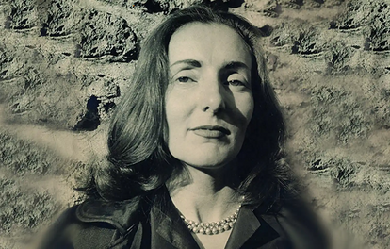
Idea Vilariño (Montevideo, 18 de agosto de 1920 - 28 de abril de 2009) poeta, ensayista y crítica literaria uruguaya perteneciente al grupo de escritores denominado Generación del 45. Dentro de sus facetas menos conocidas se encuentran la de traductora, compositora y docente. Nació en una familia de clase media y culta, en la que estaban presentes música y literatura. Su padre, Leandro Vilariño (1892-1944) fue un poeta conocido. Al igual que sus hermanos Numen, Poema, Azul y Alma, estudió música. Su madre conocía muy bien la literatura europea.
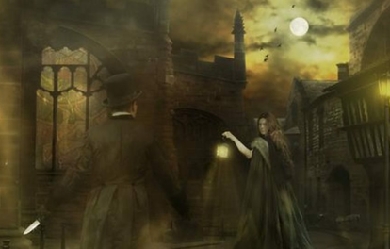
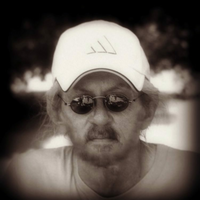
I am an enthusiastic scholar of American, Irish, and English history, Victorian literature, myths, legends, folklore, and Pagan religions. My prose and poetry are generally Gothic in theme and usually set in historical periods. My favourite authors are Edgar Allen Poe, Samuel Clemens, Charles Dickens, Henry James, Sir Arthur Conan Doyle, H.P. Lovecraft, M. R. James, Washington Irving, and Oscar Wilde, just to name a few, and my favourite poets are Keats, Byron, Yeats, Wordsworth, Tennyson, and Longfellow. I have three books of poetry currently on the market, three Gothic novels, one anthology of six horror stories, and several novellas and novelettes. I was raised in Wheatridge, Colorado and attended The University of Colorado at Denver. I currently live in Corvallis, Montana in the great Pacific Northwest.
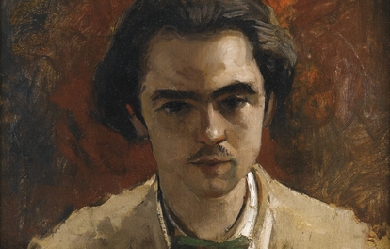
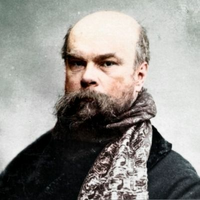
Paul Verlaine est un écrivain et poète français du xixe siècle, né à Metz (Moselle) le 30 mars 1844 et mort à Paris le 8 janvier 1896 (à 51 ans). Il s'essaie à la poésie et publie son premier recueil, Poèmes saturniens en 1866, à 22 ans. Sa vie est bouleversée quand il rencontre Arthur Rimbaud en septembre 1871. Leur vie amoureuse tumultueuse et errante en Angleterre et en Belgique débouche sur la scène violente où, à Bruxelles, Verlaine blesse superficiellement au poignet celui qu'il appelle son « époux infernal » : jugé et condamné, il reste en prison jusqu'au début de 1875, renouant avec le catholicisme de son enfance et écrivant des poèmes qui prendront place dans ses recueils suivants : Sagesse (1880), Jadis et Naguère (1884) et Parallèlement (1889). Usé par l'alcool et la maladie, Verlaine meurt à 51 ans, le 8 janvier 1896, d'une pneumonie aiguë. Il est inhumé à Paris au cimetière des Batignolles (11e division). Archétype du poète maudit, Verlaine est reconnu comme un maître par la génération suivante. Son style — fait de musicalité et de fluidité jouant avec les rythmes impairs — et la tonalité de nombre de ses poèmes — associant mélancolie et clairs-obscurs — révèlent, au-delà de l'apparente simplicité formelle, une profonde sensibilité, en résonance avec l'inspiration de certains artistes contemporains, des peintres impressionnistes ou des compositeurs (tels Reynaldo Hahn, Gabriel Fauré et Claude Debussy, qui mettront d'ailleurs en musique plusieurs de ses poèmes). Enfance Après treize ans de mariage, Nicolas-Auguste Verlaine et son épouse Élisa-Stéphanie Dehée donnent naissance, le 30 mars 1844, au 2 rue de la Haute-Pierre, à Metz, à un fils qu'ils prénomment Paul-Marie en reconnaissance à la Vierge Marie pour cette naissance tardive, Élisa ayant fait auparavant trois fausses couches. Catholiques, ils le font baptiser en l'église Notre-Dame de Metz. Paul restera le fils unique de cette famille de petite-bourgeoisie assez aisée qui élève aussi, depuis 1836, une cousine orpheline prénommée Élisa. Son père, militaire de carrière, atteint le grade de capitaine avant de démissionner de l'armée en 1851 : la famille Verlaine quitte alors Metz pour Paris. Enfant aimé et plutôt appliqué, il est mis en pension à l'institution Landry, 32 rue Chaptal, les enfants pensionnaires à Landry suivent leurs cours au lycée Condorcet. Paul Verlaine devient un adolescent difficile, et obtient finalement son baccalauréat en 1862. Entrée dans la vie adulte C'est durant sa jeunesse qu'il s'essaie à la poésie. En effet, en 1860, la pension est pour lui source d'ennui et de dépaysement. Admirateur de Baudelaire, et s'intéressant à la faune africaine, il exprime son mal-être dû à l'éloignement de son foyer, à travers une poésie dénuée de tout message si ce n'est celui de ses sentiments, Les Girafes. « Je crois que les longs cous jamais ne se plairont/ Dans ce lieu si lointain, dans ce si bel endroit/ Qui est mon Alaska, pays où nul ne va / Car ce n'est que chez eux que comblés ils seront ». Ce court poème en quatre alexandrins reste sa première approche sur le domaine poétique, même s'il ne sera publié qu'à titre posthume[réf. nécessaire]. Bachelier, il s'inscrit en faculté de droit, mais abandonne ses études, leur préférant la fréquentation des cafés et des cercles littéraires parisiens. Il s'intéresse plus sérieusement à la poésie et, en août 1863, une revue publie son premier poème connu de son vivant : Monsieur Prudhomme, portrait satirique du bourgeois qu'il reprendra dans son premier recueil. Il collabore au premier Parnasse contemporain et publie à 22 ans en 1866 les Poèmes saturniens qui traduisent l'influence de Baudelaire, mais aussi une musique personnelle orientée vers « la Sensation rendue ». En 1869, paraît le petit recueil Fêtes galantes, fantaisies inspirées par les toiles des peintres du xviiie siècle que le Louvre vient d'exposer dans de nouvelles salles. Dans la même période, son père, inquiet de son avenir, le fait entrer en 1864 comme employé dans une compagnie d'assurance, puis, quelques mois plus tard, à la mairie du 9e arrondissement, puis à l'hôtel de ville de Paris. Il vit toujours chez ses parents et, après le décès du père en décembre 1865, chez sa mère avec laquelle il entretiendra une relation de proximité et de violence toute sa vie. Paul Verlaine est aussi très proche de sa chère cousine Élisa, orpheline recueillie dès 183611 et élevée par les Verlaine avec leur fils : il souhaitait secrètement l'épouser, mais elle se marie en 1861 avec un entrepreneur aisé (il possède une sucrerie dans le Nord) ce qui permettra à Élisa de l'aider à faire paraître son premier recueil (Poèmes saturniens, 1866). La mort en couches en 1867 de celle dont il restait amoureux le fait basculer un peu plus dans l'excès d'alcool qui le rend violent : il tente même plusieurs fois de tuer sa mère. Celle-ci l'encourage à épouser Mathilde Mauté qu'un ami lui a fait rencontrer : il lui adresse des poèmes apaisés et affectueux qu'il reprendra en partie dans La Bonne Chanson, recueil publié le 12 juin 1870, mais mis en vente seulement l'année suivante, après la guerre et la Commune. Le mariage a lieu le 11 août 1870 (Paul a 26 ans et Mathilde, 17) ; un enfant, Georges, naît le 30 octobre 1871. Les références Wikipedia—https://fr.wikipedia.org/wiki/Paul_Verlaine
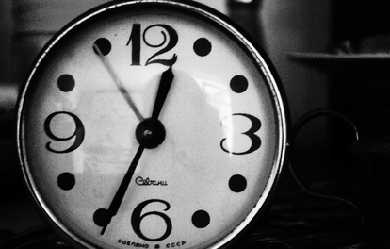

A veces es difícil morir, más cuando aún estás vivo. Rendirse no es opción y seguir adelante es mandatorio. Aveces necesitamos rupturas y olvidar que hubo historia... A veces es difícil vivir, más cuando el tiempo quiere verte morir, Pero todos necesitamos destrucción, para alcanzar un renacer en gloria. La vida no tiene manual o instrucciones sigue, sin arrepentirte y aprende día con día sus lecciones!
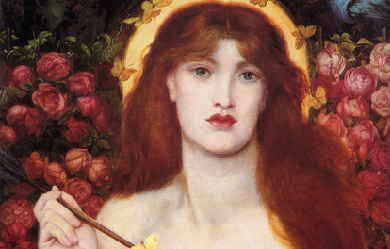
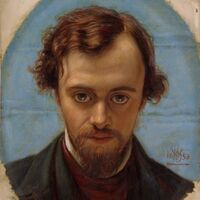
Dante Gabriel Rossetti (12 May 1828 – 9 April 1882) was an English poet, illustrator, painter and translator. He founded the Pre-Raphaelite Brotherhood in 1848 with William Holman Hunt and John Everett Millais, and was later to be the main inspiration for a second generation of artists and writers influenced by the movement, most notably William Morris and Edward Burne-Jones. His work also influenced the European Symbolists and was a major precursor of the Aesthetic movement.
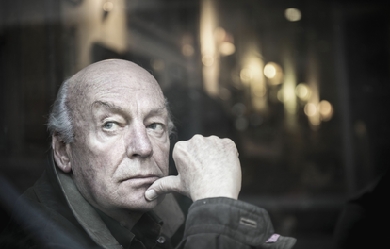
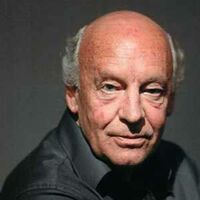
Eduardo Germán María Hughes Galeano (Montevideo, 3 de septiembre de 1940-Ib., 13 de abril de 2015) fue un periodista y escritor uruguayo, considerado uno de los escritores más influyentes de la izquierda latinoamericana. Sus libros más conocidos, Las venas abiertas de América Latina (1971) y Memoria del fuego (1986), han sido traducidos a veinte idiomas. Sus trabajos trascienden géneros ortodoxos y combinan documental, ficción, periodismo, análisis político e historia.
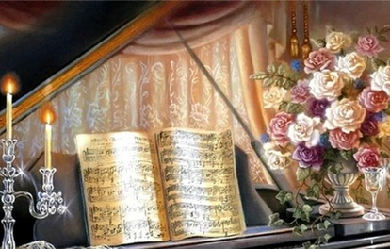
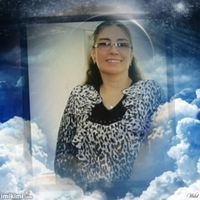
Nací en Lima Perú, y escribo poesía desde los 11 años de edad. Soy cristiana y estoy casada. Tengo cinco hijos y cuatro nietos. Hace años obtuve una Mención de Honor a nivel nacional en el certamen de poesía Manuel González Prada, y posteriormente gané el Primer Puesto a nivel nacional en el concurso de poesía César Vallejo. Ambos certámenes convocados por la Asociación de poetas del Perú. En el año 2,020 quedé entre los 12 finalistas del IX Premio Fernando Rielo de poesía Mística, entre 278 poetas de 28 países. En esta ocasión participe´con mi poemario: "Nacida para adorarte". También me otorgaron el 2do. puesto en el Concurso Internacional JOTABEANDO U.S.A. realizado en Miami - Florida, con mi poema "Tu reir, luz de vida". Así mismo me dieron una Mención de Honor en el concurso Internacional "El mundo suena en Jotabé" realizado en Ecuador, por haber obtenido altas calificaciones con mi obra: "Segaste vidas". En el año 2,021 quedé entre los 12 finalistas del certamen Fernando Rielo de poesía Mística, realizado en España...donde participaron 278 poetas de 28 países. Actualmente estoy registrada en varios foros poéticos de la red, donde ya he ganado más de 250 diplomas entre poemas destacados y concursos ganados....entre ellos el Turpial de Oro en Sociedad Venezolana de artistas internacionales... SVAI y el Laurel de Apolo y La Musa de Venus en Unión Hispanomundial de escritores UHE. Así mismo me obsequiaron el Premio al Talento Poético en el foro Versos Peregrinos. He participado en varias antologías internacionales de habla hispana. También he editado mi primer libro titulado: "Por los bosques del silencio". Toda mi obra está registrada en Safe Creative, en la Cta. Nº 1006080193112
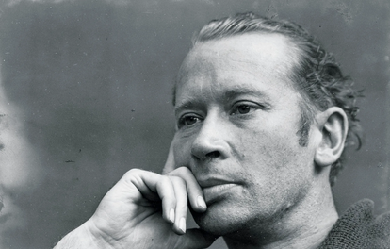
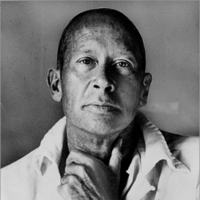
Edward Estlin Cummings (October 14, 1894 – September 3, 1962), popularly known as E. E. Cummings, with the abbreviated form of his name often written by others in lowercase letters as e.e. cummings (in the style of some of his poems—see name and capitalization, below), was an American poet, painter, essayist, author, and playwright. His body of work encompasses approximately 2,900 poems, two autobiographical novels, four plays and several essays, as well as numerous drawings and paintings. He is remembered as a preeminent voice of 20th century poetry.
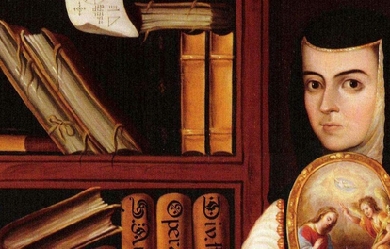
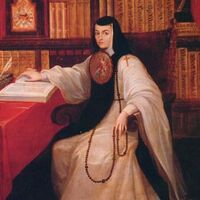
Juana Inés de Asbaje y Ramírez de Santillana, más conocida como Sor Juana Inés de la Cruz, (San Miguel Nepantla, 12 de noviembre de 1651—Ciudad de México, 17 de abril de 1695) fue una religiosa y escritora novohispana del Barroco en el Siglo de Oro. Cultivó la lírica, el auto sacramental y el teatro, así como la prosa. Por la importancia de su obra, recibió los sobrenombres de «el fénix de América», «la Décima Musa» o «la Décima Musa mexicana». A muy temprana edad aprendió a leer y a escribir. Perteneció a la corte de Antonio de Toledo y Salazar, marqués de Mancera y 25° virrey novohispano. En 1667 ingresó a la vida religiosa a fin de consagrarse por completo a la literatura. Sus más importantes mecenas fueron los marqueses de la Laguna, virreyes de la Nueva España, quienes publicaron sus obras en la España peninsular. Murió a causa de una epidemia el 17 de abril de 1695.
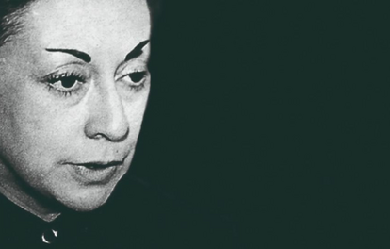
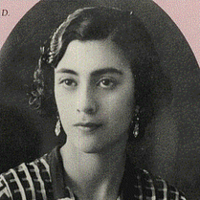
Rosario Castellanos Figueroa (Ciudad de México, 25 de mayo de 1925 - Tel Aviv, 7 de agosto de 1974) fue una escritora, periodista y diplomática mexicana, considerada una de las literatas mexicanas más importantes del siglo XX. ...si es necesaria una definición para el papel de identidad, apunte que soy una mujer de buenas intenciones y que he pavimentado un camino directo y fácil al infierno. –Rosario Castellanos

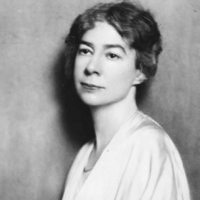
Sara Teasdale (August 8, 1884 – January 29, 1933) was an American lyric poet. She was born Sarah Trevor Teasdale in St. Louis, Missouri, and used the name Sara Teasdale Filsinger after her marriage in 1914. She had such poor health for so much of her childhood, home schooled until age 9, that it was only at age 10 that she was well enough to begin school. She started at Mary Institute in 1898, but switched to Hosmer Hall in 1899, graduating in 1903. I Shall Not Care WHEN I am dead and over me bright April Shakes out her rain-drenched hair, Tho' you should lean above me broken-hearted, I shall not care. I shall have peace, as leafy trees are peaceful When rain bends down the bough, And I shall be more silent and cold-hearted Than you are now.

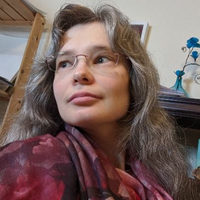
I was born with verse in my blood. I was raised with poetry mixed in with my mother's milk. We were immersed in poetry from our school days; we were taught to read it, appreciate it, glean wisdom from it, knew all the poets of old by heart...Ironcally, in my culture, writing poetry is the high art and privilege of men seasoned by age and gifted by Creator with this rare talent; it was not for the young to 'fool around' with, so we were not taught or encouraged to express ourselves through verse. So I never knew I had it... It was in my young adulthood that I started to feel the Song of the heart stirring in me. A friend shared with me his poetry, showed me that we all have the capability, if only we tune into ourselves and listen. The first few tentative poems were born from under my pen. Then life happened, I tuned out, forgot that part of myself, shut the door on it for more than a decade. I do not know what prompted for my Song to resurface, one day it just started pouring out of me, but I am grateful for the reawakening of that part of my soul that I'd given up for lost, as well as for the people around me who fuel my inspiration. Whether intentionally or not, they keep the fire burning. An enormous Thank You to all of you for reading, commenting, sharing and inspiring. This is a wonderful and nurturing community for all aspiring poets. Prose is the language of the mind, poetry is the language of the soul.
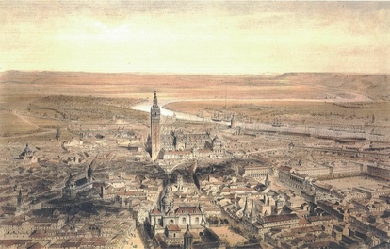
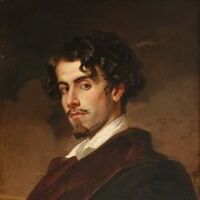
Gustavo Adolfo Domínguez Bastida (Sevilla, 17 de febrero de 1836 – Madrid, 22 de diciembre de 1870), más conocido como Gustavo Adolfo Bécquer, fue un poeta y narrador español, perteneciente al movimiento del Romanticismo, aunque escribió en una etapa literaria perteneciente al Realismo. Por ser un romántico tardío, ha sido asociado igualmente con el movimiento posromántico. Aunque, mientras vivió, fue moderadamente conocido, sólo comenzó a ganar verdadero prestigio cuando, tras su muerte, fueron publicadas muchas de sus obras. Nació en Sevilla el 17 de febrero de 1836, hijo del pintor José Domínguez Insausti, que firmaba sus cuadros con el apellido de sus antepasados como José Domínguez Bécquer. Sus más conocidos trabajos son sus Rimas y Leyendas. Los poemas e historias incluidos en esta colección son esenciales para el estudio de la Literatura hispana, siendo ampliamente reconocidos por su influencia posterior. Gustavo Adolfo por Mercedes de Velilla En la margen del Betis murmurante, donde expira, entre flores, la onda inquieta, en monumento digno del poeta, su hermosa estatua se alzará triunfante. El sol le ofrecerá nimbo radiante; sus perfumes, la rosa y la violeta; la aurora, el beso de su luz discreta; el crepúsculo, brisa refrescante. Traerá la noche espíritus y hadas, visiones de Leyendas peregrinas que poblarán las verdes enramadas. La alondra y las obscuras golondrinas cantarán, al lucir las alboradas, las Rimas inmortales y divinas.
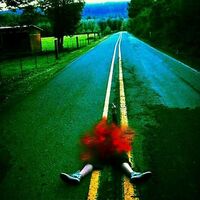
I'm a teenage experimental poet, song writer, and author. I come from a good home but a not so good past. I explain myself through poetry and writing, because there is no other way to described me. I'm just awkward. I have severe depression and anxiety, along with other problems and struggles, and writing helps ease it all. I have love and passion for my work, and I plan on becoming a published author in the future. I try to use all senses of perspective in my writing; I wish to help change the world one poem at a time. ***PLEASE DO NOT COPYRIGHT WHAT IS PUBLISHED ON THIS BLOG. ONLY SHARE UNDER MY NAME AND ESTABLISH CORRECT OWNERSHIP. I CLAIM THESE WORKS AS MY OWN AND UNDER NO CIRCUMSTANCES SHOULD I BE BLAMED FOR FRAUD, OR HAVE PERSONS DENY ME MY RIGHTS BECAUSE OF MY AGE AND SOCIAL STANDING. MY WRITINGS, MY NAME, MY STORY, MY RIGHT. PLEASE RESPECT MY OWNERSHIP AND RESPECT MY WISHES AS A YOUNG ADULT WRITER.*** ~THANK YOU~
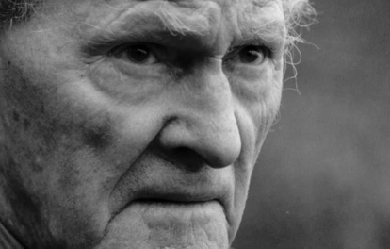
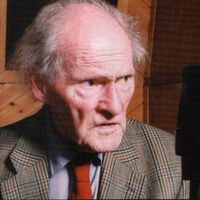
Ronald Stuart Thomas (29 March 1913 – 25 September 2000), published as R. S. Thomas, was a Welsh poet and Anglican priest who was noted for his nationalism, spirituality and deep dislike of the anglicisation of Wales. In 1955, John Betjeman, in his introduction to the first collection of Thomas’s poetry to be produced by a major publisher, Song at the Year's Turning, predicted that Thomas would be remembered long after Betjeman himself was forgotten. M. Wynn Thomas said: "He was the Aleksandr Solzhenitsyn of Wales because he was such a troubler of the Welsh conscience. He was one of the major English language and European poets of the 20th century." R. S. Thomas was born in Cardiff, the only child of Thomas Hubert and Margaret (née Davis). The family moved to Holyhead in 1918 because of his father's work in the merchant navy. He was awarded a bursary in 1932 to study at Bangor University, where he read Classics. In 1936, having completed his theological training at St. Michael's College, Llandaff, he was ordained as a priest in the Church in Wales. From 1936 to 1940 he was the curate of Chirk, Denbighshire, where he met his future wife, Mildred (Elsi) Eldridge, an English artist. He subsequently became curate at Tallarn Green, Flintshire. Thomas and Mildred were married in 1940 and remained together until her death in 1991. Their son, Gwydion, was born 29 August 1945. The Thomas family lived on a tiny income and lacked the comforts of modern life, largely by the Thomas's choice. One of the few household amenities the family ever owned, a vacuum cleaner, was rejected because Thomas decided it was too noisy. For twelve years, from 1942 to 1954, Thomas was rector at Manafon, near Welshpool in rural Montgomeryshire. It was during his time at Manafon that he first began to study Welsh and that he published his first three volumes of poetry, The Stones of the Field, An Acre of Land and The Minister. Thomas' poetry achieved a breakthrough with the publication of his fourth book Song at the Year's Turning, in effect a collected edition of his first three volumes, which was critically very well received and opened with Betjeman's famous introduction. His position was also helped by winning the Royal Society of Literature's Heinemann Award. Thomas learnt the Welsh language at age 30, too late in life, he said, to be able to write poetry in it. The 1960s saw him working in a predominantly Welsh speaking community and he later wrote two prose works in Welsh, Neb (English: Nobody), an ironic and revealing autobiography written in the third person, and Blwyddyn yn Llŷn (English: A Year in Llŷn). In 1964 he won the Queen's Gold Medal for Poetry. From 1967 to 1978 he was vicar at St Hywyn's Church (built 1137) in Aberdaron at the western tip of the Llŷn Peninsula. Thomas retired from church ministry in 1978 and he and his wife relocated to Y Rhiw, in "a tiny, unheated cottage in one of the most beautiful parts of Wales, where, however, the temperature sometimes dipped below freezing", according to Theodore Dalrymple. Free from the constraints of the church he was able to become more political and active in the campaigns that were important to him. He became a fierce advocate of Welsh nationalism, although he never supported Plaid Cymru because he believed they did not go far enough in their opposition to England. In 1996 Thomas was nominated for the Nobel Prize for Literature (the winner that year was Seamus Heaney). Thomas died on 25 September 2000, aged 87, at his home at Pentrefelin near Criccieth. He had been ill with heart trouble and had been treated at Gwynnedd hospital until two weeks before he died. After his death an event celebrating his life and poetry was held in Westminster Abbey with readings from Heaney, Andrew Motion, Gillian Clarke and John Burnside. Thomas's ashes are buried close to the door of St. John's Church, Porthmadog, Gwynedd. Beliefs Thomas believed in what he called "the true Wales of my imagination", a Welsh-speaking, aboriginal community that was in tune with the natural world. He viewed western (specifically English) materialism and greed, represented in the poetry by his mythical "Machine", as the destroyers of community. He could tolerate neither the English who bought up Wales and, in his view, stripped it of its wild and essential nature, nor the Welsh whom he saw as all too eager to kowtow to English money and influence. This may help explain why Thomas was an ardent supporter of CND and described himself as a pacifist but also why he supported the Meibion Glyndŵr fire-bombings of English-owned holiday cottages in rural Wales. On this subject he said in 1998, "what is one death against the death of the whole Welsh nation?" He was also active in wildlife preservation and worked with the RSPB and Welsh volunteer organisations for the preservation of the Red Kite. He resigned his RSPB membership over their plans to introduce non-native kites to Wales. Thomas's son, Gwydion, a resident of Thailand, recalls his father's sermons, in which he would "drone on" to absurd lengths about the evil of refrigerators, washing machines, televisions and other modern devices. Thomas preached that they were all part of the temptation of scrambling after gadgets rather than attending to more spiritual needs. "It was the Machine, you see", Gwydion Thomas explained to a biographer. "This to a congregation that didn’t have any of these things and were longing for them." Although he may have taken some ideas to extreme lengths, Theodore Dalrymple wrote, Thomas "was raising a deep and unanswered question: What is life for? Is it simply to consume more and more, and divert ourselves with ever more elaborate entertainments and gadgetry? What will this do to our souls?" Although he was a cleric, he was not always charitable and was known for being awkward and taciturn. Some critics have interpreted photographs of him as indicating he was "formidable, bad-tempered, and apparently humorless." Works Almost all of Thomas's work concerns the Welsh landscape and the Welsh people, themes with both political and spiritual subtext. His views on the position of the Welsh people, as a conquered people are never far below the surface. As a cleric, his religious views are also present in his works. His earlier works focus on the personal stories of his parishioners, the farm labourers and working men and their wives, challenging the cosy view of the traditional pastoral poem with harsh and vivid descriptions of rural lives. The beauty of the landscape, although ever-present, is never suggested as a compensation for the low pay or monotonous conditions of farm work. This direct view of "country life" comes as a challenge to many English writers writing on similar subjects and challenging the more pastoral works of such as contemporary poets as Dylan Thomas. Thomas's later works were of a more metaphysical nature, more experimental in their style and focusing more overtly on his spirituality. Laboratories of the Spirit (1975) gives, in its title, a hint at this development and also reveals Thomas's increasing experiments with scientific metaphor. He described this shift as an investigation into the "adult geometry of the mind".} Fearing that poetry was becoming a dying art, inaccessible to those who most needed it, "he attempted to make spiritually minded poems relevant within, and relevant to, a science-minded, post-industrial world", to represent that world both in form and in content even as he rejected its machinations. Despite his nationalism Thomas could be hard on his fellow countrymen. Often his works read as more of a criticism of Welshness than a celebration. He himself said there is a "lack of love for human beings" in his poetry. Other critics have not been so harsh. Al Alvarez said: "He was wonderful, very pure, very bitter but the bitterness was beautifully and very sparely rendered. He was completely authoritative, a very, very fine poet, completely off on his own, out of the loop but a real individual. It's not about being a major or minor poet. It's about getting a work absolutely right by your own standards and he did that wonderfully well." Thomas's final works commonly sold 20,000 copies in Britain alone. Books * The Stones of the Field (1946) * An Acre of Land (1952) * The Minister (1953) * Song at the Year's Turning (1955) * Poetry for Supper (1958) * Tares, [Corn-weed] (1961) * The Bread of Truth (1963) * Words and the Poet (1964, lecture) * Pietà (1966) * Not That He Brought Flowers (1968) * H'm (1972) * What is a Welshman? (1974) * Laboratories of the Spirit (1975) * Abercuawg (1976, lecture) * The Way of It (1977) * Frequencies (1978) * Between Here and Now (1981) * Ingrowing Thoughts (1985) * Neb (1985) in Welsh, autobiography, written in the third person * Experimenting with an Amen (1986) * Welsh Airs (1987) * The Echoes Return Slow (1988) * Counterpoint (1990) * Blwyddyn yn Llŷn (1990) in Welsh * Pe Medrwn Yr Iaith : ac ysgrifau eraill ed. Tony Brown & Bedwyr L. Jones, essays in Welsh (1990) * Mass for Hard Times (1992) * No Truce with the Furies (1995) * Autobiographies (1997, collection of prose writings) * Residues (2002, posthumously) References Wikipedia - http://en.wikipedia.org/wiki/R._S._Thomas




